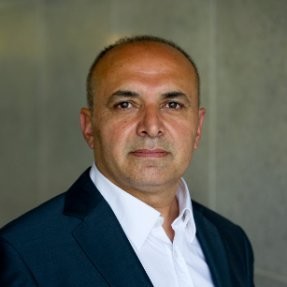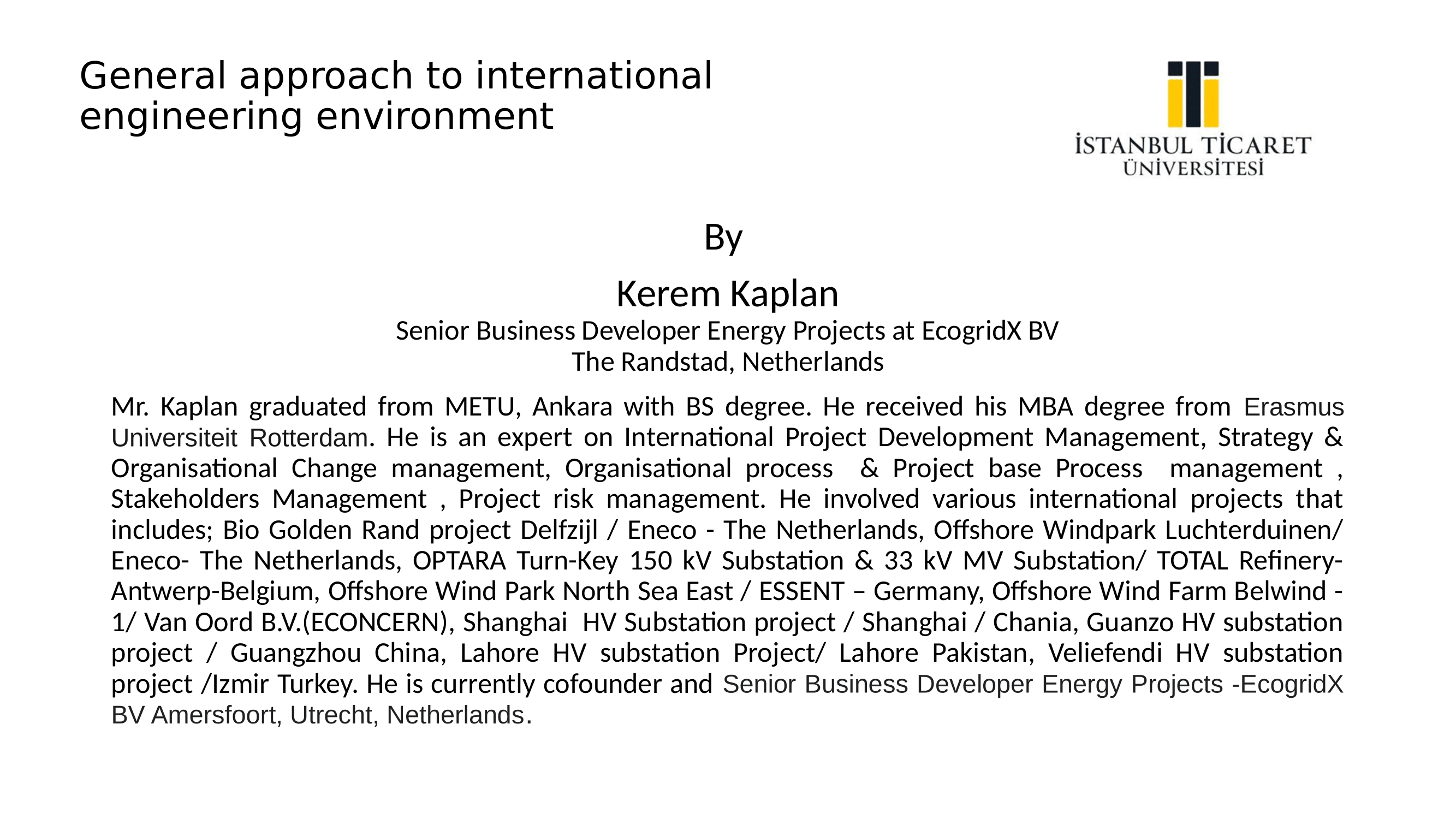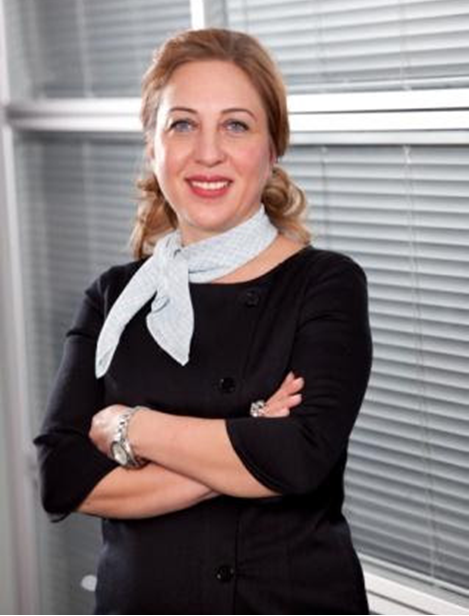
Kerem Kaplan, who is currently working as Senior Business Developer Energy Projects at EcogridX BV will give a talk on “RGeneral approach to international engineering environment” and share his valuable experiences in the field with the Istanbul Commerce University audience on November 17th, 2021, Wednesday, between 9.00 a.m. – 11.00 a.m. at C-307, Kucukyali campus, focusing majorly on freshman students enrolled EEE101 – Introduction to Electrical-Electronics Engineering course.

Mr. Kaplan graduated from METU, Ankara with BS degree. He received his MBA degree from Erasmus Universiteit Rotterdam. He is an expert on International Project Development Management, Strategy & Organisational Change management, Organisational process & Project base Process management , Stakeholders Management , Project risk management. He involved various international projects that includes; Bio Golden Rand project Delfzijl / Eneco – The Netherlands, Offshore Windpark Luchterduinen/ Eneco- The Netherlands, OPTARA Turn-Key 150 kV Substation & 33 kV MV Substation/ TOTAL Refinery- Antwerp-Belgium, Offshore Wind Park North Sea East / ESSENT – Germany, Offshore Wind Farm Belwind -1/ Van Oord B.V.(ECONCERN), Shanghai HV Substation project / Shanghai / Chania, Guanzo HV substation project / Guangzhou China, Lahore HV substation Project/ Lahore Pakistan, Veliefendi HV substation project /Izmir Turkey. He is currently cofounder and Senior Business Developer Energy Projects -EcogridX BV Amersfoort, Utrecht, Netherlands.
- Guest: Kerem Kaplan, Senior Business Developer Energy Projects, EcogridX BV,
- Date: November 17th, 2021, Wednesday, 9.00 a.m. – 11.00 a.m. (GMT+3)
- Venue: Istanbul Commerce University, Kucukyali Campus, C-307
- Topic: General approach to international engineering environment





